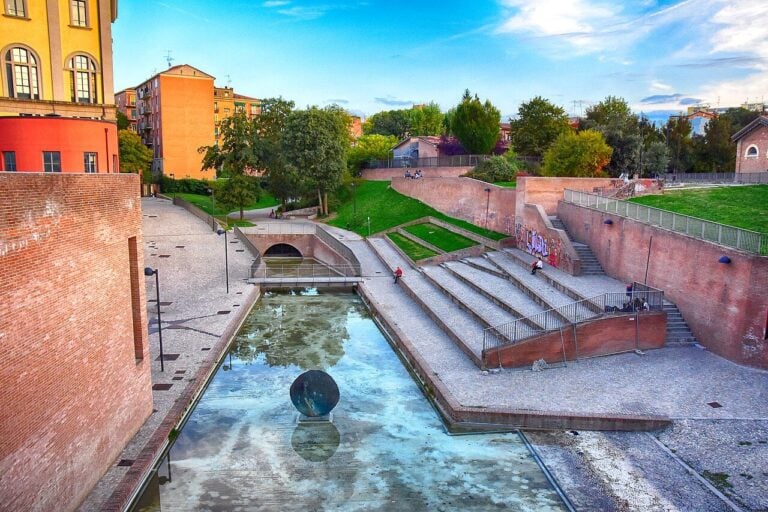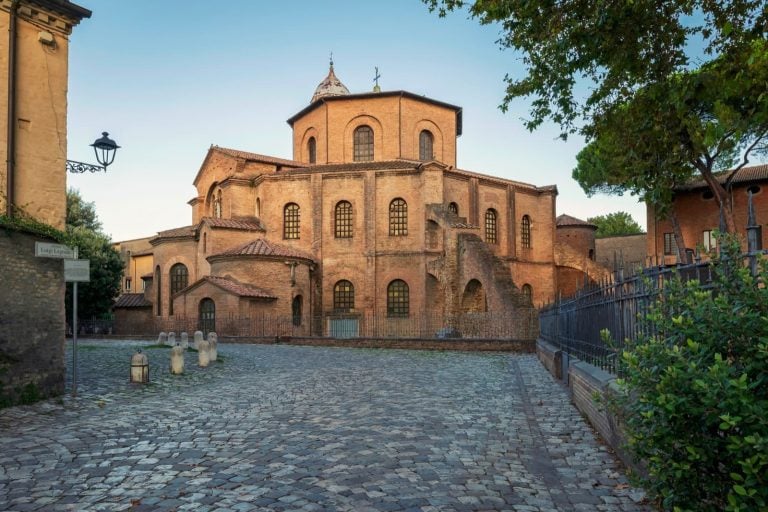
Time
24 h
Ferrara is known as the city of bicycles, but it’s also perfect for exploring on foot.
Here’s a one-day itinerary through the most beautiful spots in the Este city: a 10-stop urban trek through historic monuments, streets, squares, and palaces.
Discover all the must-see sights of Ferrara in a single walk.
Useful Info:
> If you’re arriving in Ferrara by car, you can leave your car in the BorgoRicco car park (Contrada di Borgoricco 16) or in the San Guglielmo car park (Via Palestro).
> If you’re arriving by train, you can reach the first spot of our city tour in a 20-minute walk along the main Viale Cavour or the quieter streets of Via Cassoli / Via Garibaldi. Alternatively, you can take the bus which will take you to the Cavour Giardini stop in just 5 minutes.
Este Castle

Our itinerary begins at the city’s most iconic landmark, located in the heart of the historic centre: the Castello Estense.
Surrounded by a moat that is still filled with water, Castello Estense was built in 1385 by Niccolò II d’Este to protect the court from local uprisings. With its four square towers and frescoed interiors, the castle is an enduring symbol of the grandeur of the Este family, who lived here until 1598.
It is possible to walk around the castle, entering the courtyard from Viale Cavour and exiting in Piazzetta Castello, for another panoramic view of this majestic building.
From here you can continue towards Piazza Savonarola, where you can stop to admire the statue of Girolamo Savonarola, before continuing towards the Cathedral.

Cathedral of San Giorgio

Ferrara’s Cathedral of San Giorgio, built from the 12th century, reflects the many historical periods the city has lived through.
The lower part of the façade is Romanesque, while the upper part is Gothic, with a magnificent Last Judgement and a Gothic loggia with a once-gilded statue of the Virgin and Child.
The imposing Renaissance bell tower in white and pink marble is an unfinished work attributed to Leon Battista Alberti, and the brick apse was designed by the famous Ferrara architect Biagio Rossetti.

Turning your back to the Cathedral and passing under the Volto del Cavallo, with the statues of Nicolò III and Borso d’Este on either side, you reach the Piazza Municipale, where you can admire the imposing staircase of the Palazzo Municipale.
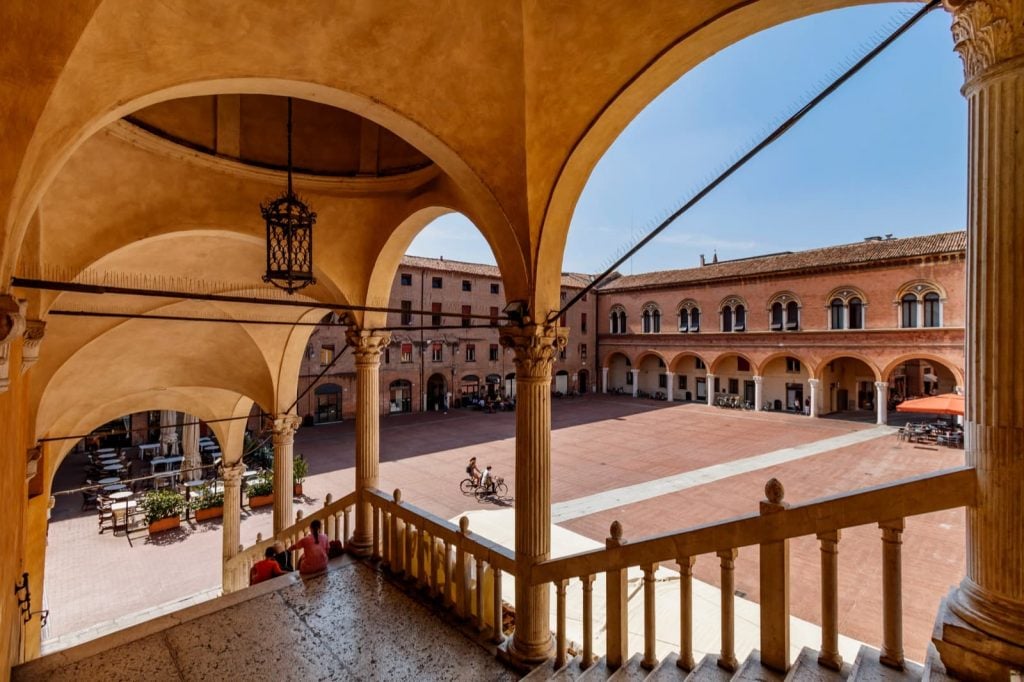
Also not to be missed is the Duchesses’ Garden, a leafy corner in the heart of the city where the ladies of the court loved to stroll.
Piazza Trento Trieste
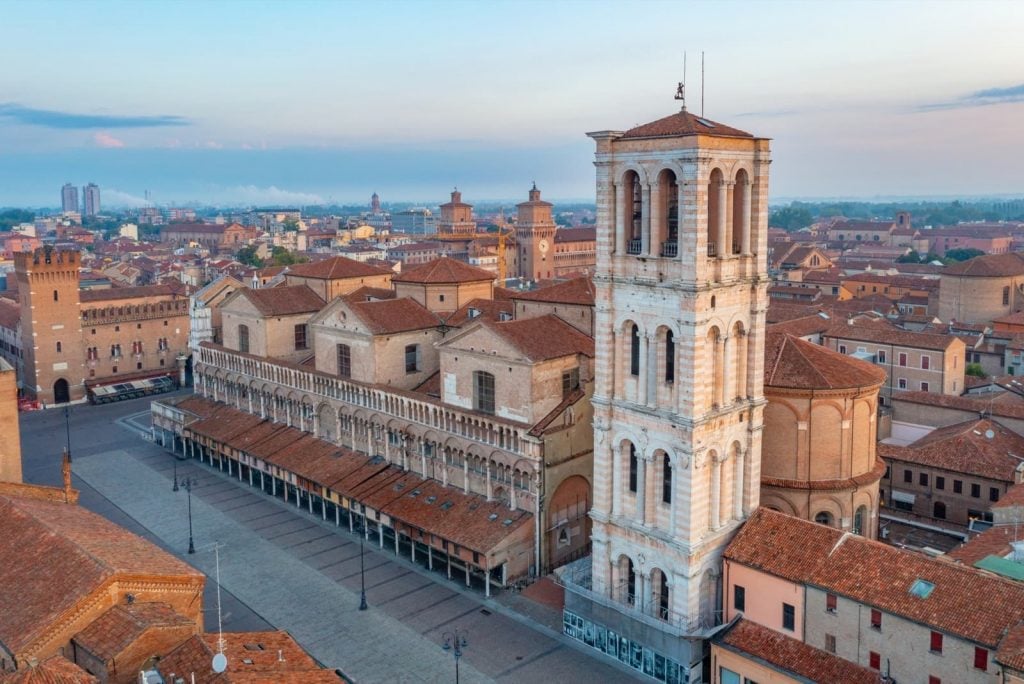
Leaving the Cathedral behind, we head for Piazza Trento Trieste, the city’s main square.
Running along the side of the Cathedral is the Loggia dei Merciai, a portico lined with shops and stalls that has been here since the Middle Ages. On the side of the church you’ll see the remains of the ancient Porta dei Mesi, whose sculptures are now housed in the Cathedral Museum.
The Cathedral Museum is located just across the square from the Cathedral, and a stop at the very least to admire the magnificent cloister of the former Church of San Romano is a must.

Via delle Volte

From the cloister, walk down Via San Romano to the evocative Via delle Volte, a medieval street famous for its arches, which once connected the riverside warehouses to the workshops and homes in the city centre. This area represents the medieval core of the city and was also the axis along which the city developed between the 7th and 11th centuries.
You’ll also find yourself on the edge of Ferrara’s old Jewish ghetto, where the local Jewish community, one of the oldest in Italy, was confined from 1627 until the Unification of Italy.
Via Mazzini was the main street of the old ghetto, where the shops of the Jewish community were once concentrated. Other streets that were part of the ghetto were today’s Via Vignatagliata and Via Vittoria.
For a more in-depth look at Ferrara’s Jewish history, visit the MEIS – the National Museum of Italian Judaism and the Shoah, at Via Piangipane 81.
Palazzo Schifanoia
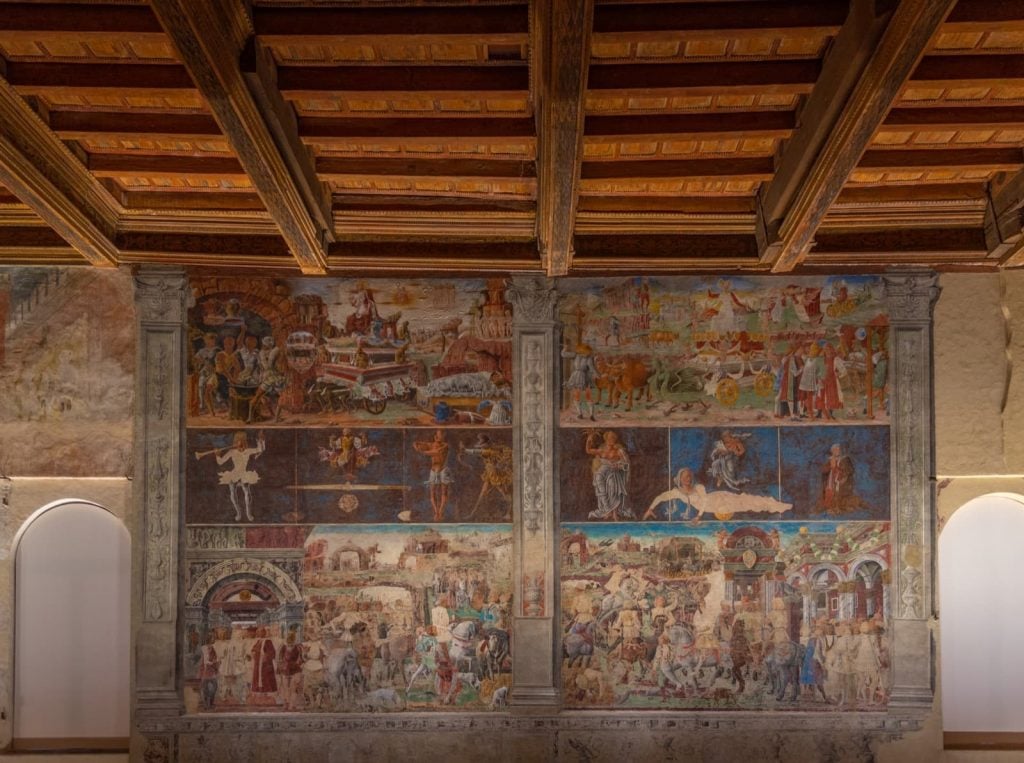
A short walk through medieval Ferrara (Via Romiti, Vicolo del Granchio, Via Carmelino, Via Borgo di Sotto) brings us to the next stop on our Ferrara itinerary. Our next stop is Palazzo Schifanoia.
Palazzo Schifanoia is, among the Delizie Estensi, the one closest to the city centre. It was built at the end of the 14th century (1385-1391) to relieve (“schivar” or “schifar”) the boredom (“noia”), hence the name, and was later enlarged at the behest of Borso d’Este (1450-1471). It was here that the court gathered to relax, lounge and feast.
The palace, richly decorated with frescoes, is a symbol of the grandeur of the d’Este family and the splendour of the Ferrarese Renaissance.
The most famous and evocative room in the palace is undoubtedly the Salone dei Mesi (Hall of the Months) on the piano nobile, where it is possible to admire one of the most important cycles of frescoes in 15th-century Italy, the joint work of several Ferrarese painters from the school of Cosmé Tura, including Francesco del Cossa and Ercole de’ Roberti.
Originally, the great hall was divided vertically into twelve sections, one for each month, but only those from March to September have survived, to be read anti-clockwise.
Each month is divided into three horizontal panels. The upper panel depicts the divine world of pagan deities, surrounded by mythological scenes or scenes from everyday life. In the lower part we find the human world, with depictions of the activities of the people and the court, where the figure of the Duke Borso d’Este also appears. Finally, in the central band, between man and gods, are the signs of the western zodiac, accompanied by the decans of the Egyptian zodiac.
Casa Romei

Returning to the centre of the city, we take Via Pergolato (where the Monastery of Corpus Domini is located, a place where the remains of several important members of the d’Este family, including Lucrezia Borgia, are kept, as well as the memories of Santa Caterina Vegri) and then Via Savonarola, to reach Casa Romei.
The palace is a striking example of a noble residence between the Middle Ages and the Renaissance. It was built by the merchant Giovanni Romei in the middle of the 15th century and later enlarged and embellished on the occasion of his second marriage to Polissena d’Este (1468).
The courtyard, with its late Gothic style and floral decorations, is particularly striking, as are the interior rooms, with their fine wall decorations and wooden ceilings.
Today the palace houses the Casa Romei Museum, which collects works of art from churches, convents and palaces in Ferrara, including works by Donatello, Francesco del Cossa, Gregorio di Lorenzo, Bastianino and Alfonso Lombardi.
Leaving the Casa Romei and continuing along Via Savonarola, the Church of San Francesco, built in 1494 by Biagio Rossetti for Duke Ercole I, is worth a stop.
Rotonda Foschini of Municipal Theatre
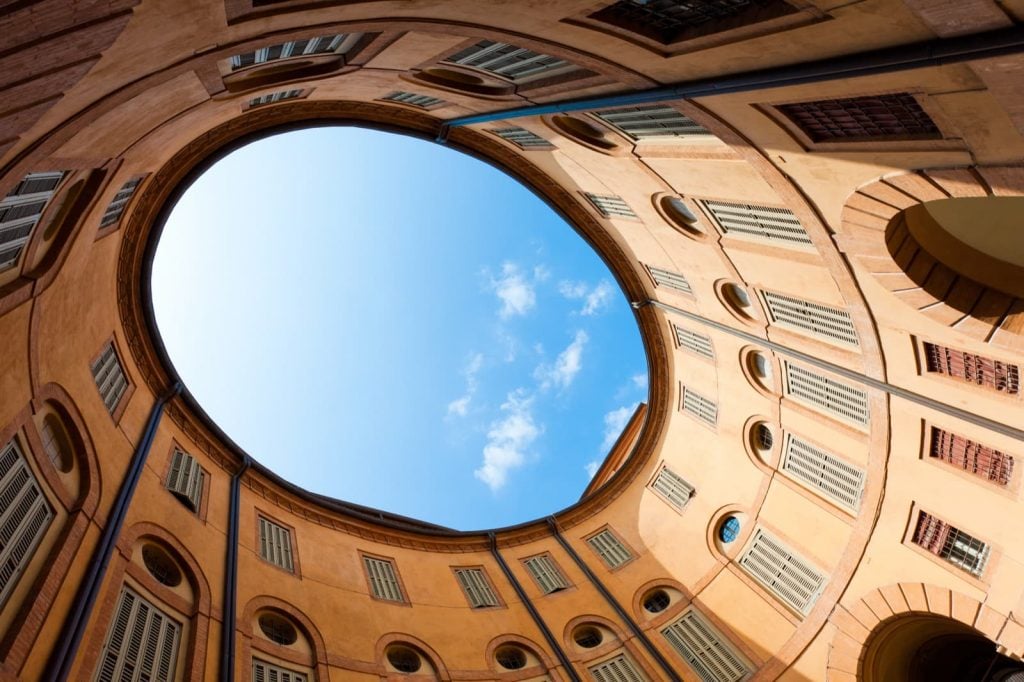
From the church of San Francesco, continue along Via Voltapaletto and Via Guglielmo degli Adelardi (where you will find the oldest enoteca in the world, Al Brindisi) until you reach Corso Martiri della Libertà, in front of the Estense Castle.
Here, on the left, is the Municipal Theatre of Ferrara, dedicated to Maestro Claudio Abbado.
Built between 1773 and 1797 to a design by Antonio Foschini and Cosimo Morelli, following the general lines of the so-called ‘Teatro all’italiana’, it has a peculiarity that makes it unique: the Rotonda Foschini, a small elliptical courtyard that was once used for the passage of carriages.
Definitely one of the most photogenic hidden corners of the city!
Corso Ercole I d'Este

Leaving the theatre and the castle behind, we cross Viale Cavour to reach the most emblematic street of the Ferrara Renaissance: Corso Ercole I d’Este.
Formerly known as Via degli Angeli, this street, still devoid of shops, is lined with prestigious palaces and retains its Renaissance charm.
This street is one of the two main axes of the so-called Addizione Erculea, the extension of the city to the north of Viale Cavour / Corso Giovecca, which Ercole I had built in 1492 to a design by Biagio Rossetti. The great architect conceived a plan which, for its originality and rationality, made Ferrara the “first modern city in Europe”.
Continuing along the Corso we reach the picturesque Quadrivio degli Angeli, the intersection of Corso Ercole I d’Este with Corso Biagio Rossetti / Corso Porta Mare, where we find three imposing historic palaces: Palazzo Turchi di Bagno, Palazzo Prosperi Sacrati and the magnificent Palazzo dei Diamanti.
Palazzo dei Diamanti
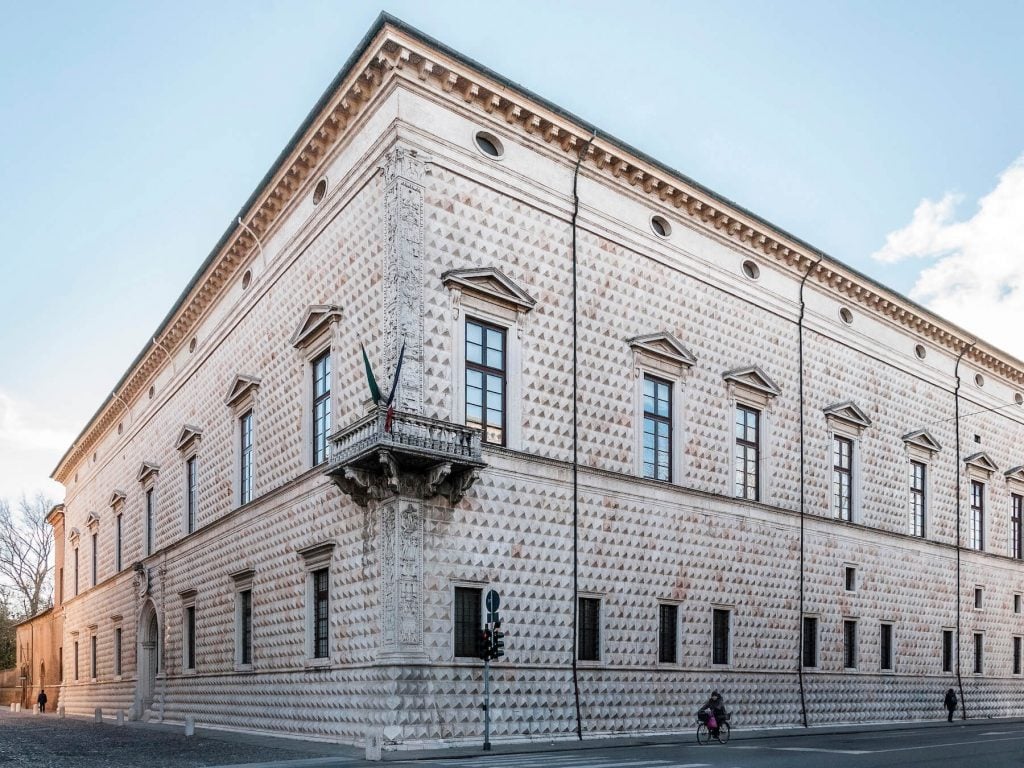
The Palazzo dei Diamanti is considered the architectural masterpiece of Biagio Rossetti; its two façades are characterised by more than 8000 white and pink marble blocks in the shape of a pyramid, or ‘diamond’, hence the name.
Apart from the façade, the palace is worth visiting for at least three reasons
– its atmospheric courtyard;
– The valuable temporary exhibitions held on the ground floor;
– the Pinacoteca Nazionale di Ferrara, on the main floor, which offers an important overview of Ferrarese painting from the 13th to the 18th centuries.
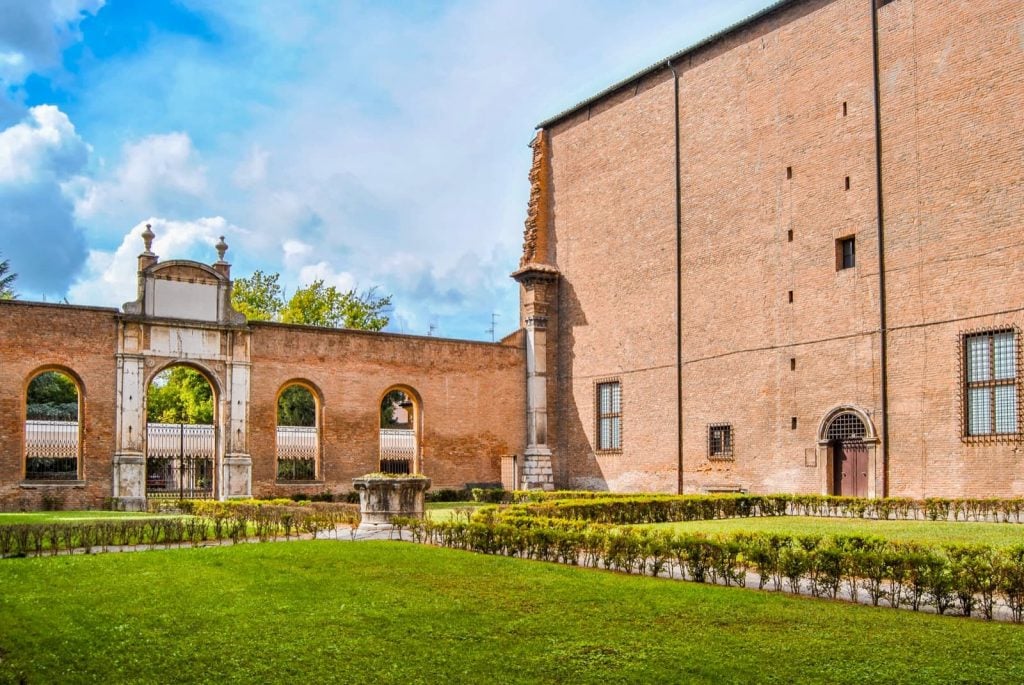
If you are an art and culture lover, from Palazzo dei Diamanti you can visit nearby Palazzo Massari, which houses the Gallery of Modern and Contemporary Art of Ferrara.
Continue along Corso Porta Mare towards Piazza Ariostea (the oval square also designed by the architect Biagio Rossetti, where the Ferrara’s Palio is held), along the Massari Park with its secular trees, until you reach the 16th century palace.
Here, inside the former PAC – Padiglione d’Arte Contemporanea (Contemporary Art Pavilion), is Spazio Antonioni, the permanent museum that houses part of the Michelangelo Antonioni Fund, the extraordinary collection of 47,000 objects – including documents, films and more – that the famous director donated to his home town: a true journey into the intellectual and creative universe of one of the fathers of modern cinematography.
Porta degli Angeli e Mura di Ferrara
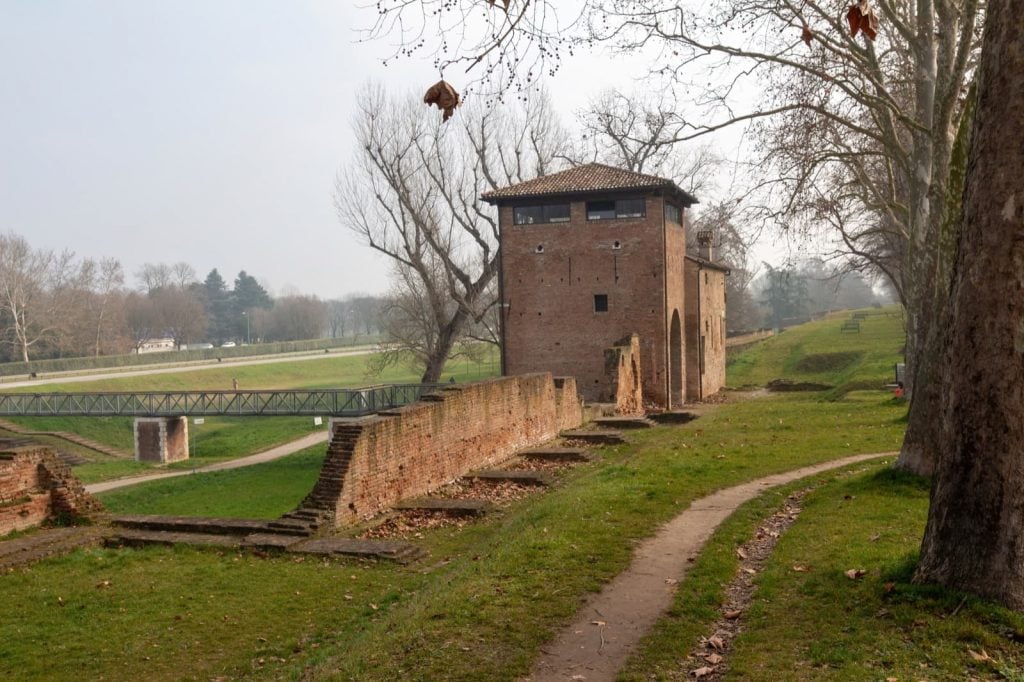
We continue our walk along Corso Ercole I d’Este for the last stretch of our urban itinerary in Ferrara.
In the second part of the Corso, the palazzi become less numerous and less important, until the street resembles a country road lined with tall poplars.
This leads to the Porta degli Angeli (Angels’ Gate). Built as a watchtower, it was the ancient entrance to the ducal hunting estate, which stood where the Giorgio Bassani Urban Park now stands.
Here we are on the ancient Walls of Ferrara, which surround the historic centre for almost 9 kilometres and are now used by the citizens as a meeting place and an ideal route for walking or cycling.
The Walls of Ferrara are a successful combination of monumental beauty and military functionality; walking along them is the perfect way to say goodbye to the city of the Este family in a gentle and fascinating way.
Author
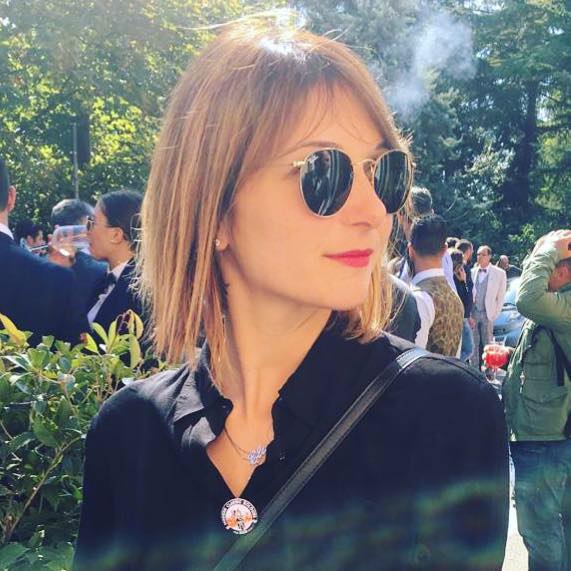
Elisa Mazzini
Social Media Manager for @inEmiliaRomagna and full-time mom.
You may also like
Modena on foot, what to see in a 10-stage tour
by Maria Grazia Masotti /// June 3, 2025
Cesena on foot, what to see in a 10-stage tour
by Maria Grazia Masotti /// July 8, 2025
Forlì on foot, what to see in a 10-stage tour
by Maria Grazia Masotti /// July 22, 2025

Interested in our newsletter?
Every first of the month, an email (in Italian) with selected contents and upcoming events.
Bologna on foot, what to see in 10 unusual stops
by Maria Grazia Masotti /// August 7, 2025
Ravenna on foot, what to see in a 10-stage tour
by Davide Marino /// February 13, 2025



